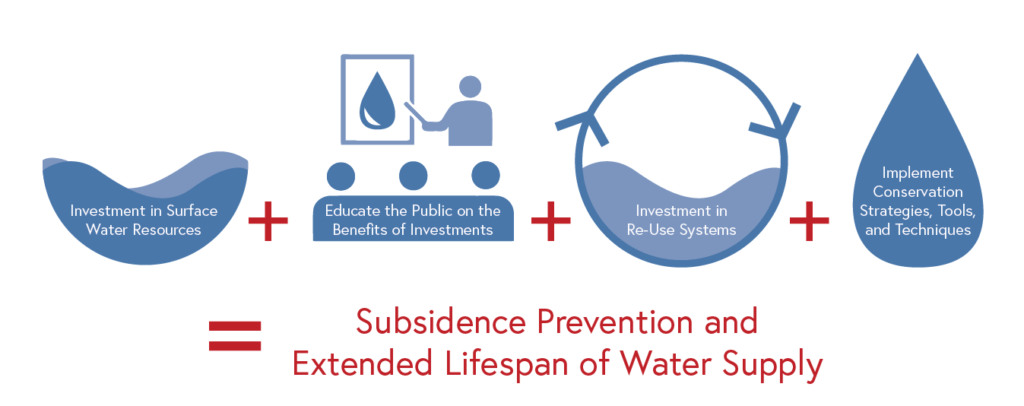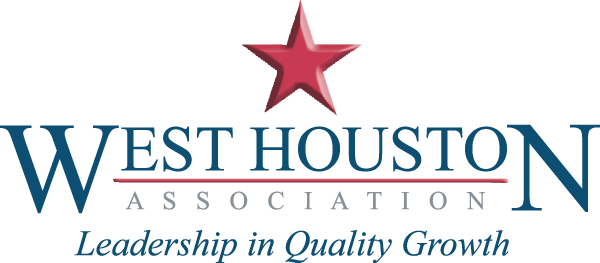WHA’s Water Resources Committee assesses the capacity of water supply delivery for the Greater West Houston region.
WHA’s Water Resources Committee
Learn more about our Water Resources Committee at www.westhouston.org
Population growth, subsidence, conveyance, and regulation have triggered billions of dollars in investments in regional water and wastewater infrastructure in the Houston region. Building and maintaining this infrastructure will take continued effort and vigilance from public leaders.
Goal
Greater West Houston should have clean, safe, reliable, and reasonably priced public water supplies and clean water flowing through its waterways that are sustainably sourced and managed. The public should understand the commitment and effort needed to continue providing safe, clean water.

Greater West Houston has substantial reliable surface water resources, but development of these resources hinges on critical infrastructure projects in the 2021 Region H Water Plan. The Houston region’s reliance on groundwater caused subsidence, which has required conversion to surface water.
Surface Water Infrastructure. The City of Houston and the regional water authorities (with financing from the Texas Water Development Board) are currently building more than $3 billion in projects to provide adequate regional surface water supplies through 2060, including supplies for Greater West Houston. The West Houston Association has supported this investment in surface water resources, which prevents subsidence and associated increased flood risks.
Funding for water infrastructure may be jeopardized by proposed changes to the regulatory framework. These changes could undermine the billions of dollars invested in critical water supply projects and the successful development of Greater West Houston.
Continued Support & Outreach. Explaining to the public the benefits of investments in our water resources and infrastructure is as critical as explaining the consequences of failing to make these investments. These regional water supply projects are a model for long-range planning, regional cooperation, and successful and innovative financing.
Greater West Houston enjoys relatively high water quality, which is essential to attracting large numbers of businesses and families. Municipal Utility Districts (MUDs) must monitor and manage the capacity of treatment facilities. MUDs in general, with help from groups such as HGAC’s bacteria implementation group (BIG) and the TCEQ’s Advisory and Implementation Groups, have managed capacity and outflows well and helped improve regional water quality. Growth contributes to increasing water and wastewater prices, which concern consumers.
Public Outreach. Municipalities and MUDs can take advantage of educational and public awareness materials from other regional and state agencies that have already invested in developing these resources. MUD operators can “get the word out” to the general public and end users. We encourage state officials to work with their communities to understand the critical role that MUDs play in providing public services and how consumers can make better decisions to help control prices.
Over 300 MUDs collectively provide water service and wastewater treatment for most residents and businesses in Greater West Houston. Originally conceived as entities that would be annexed into municipalities, MUDs are providing more service for longer durations due to policy changes. These policy changes include a shift in the City of Houston’s annexation policy and changes to state law regarding annexation.
Professional Standards. Most water and wastewater facilities within MUDs in Houston are administered by private operators and engineering firms that adhere to “best practices,” which are rigorous standards that exceed state requirements. These operators and firms compete and continually improve standards while keeping service costs low to retain MUD customers, who are represented by local boards. We encourage continued conversation on existing standards and best practices.
The useful life of many of the wastewater facilities within MUDs is generally between 40 and 50 years. Temporary treatment facilities may have useful lives closer to 25 years. Established municipalities and MUDs will need to invest in rehabilitation or replacement of aging facilities.
CMOM Programs. Utility operators should keep their governing entities well informed of facility capacity limitations and anticipated costs of increasing capacity. Preparing Capacity, Management, Operations, and Maintenance (CMOM) Programs in the fashion recommended by the Environmental Protection Agency is especially helpful for municipalities and MUDs with aging infrastructure. Utility providers with newer facilities should organize records so that implementing a CMOM program is much less burdensome.
With each new Presidential administration the Environmental Protection Agency (EPA) seems to substantially change its water quality enforcement and permitting policy. State and local regulators can also complicate the regulatory environment in ways that do not always lead to optimal outcomes.
Consistent Standards. Consistent, fair standards are important for stable, sustainable development. Providing some flexibility for local variation is important to address differences between regions and communities.


